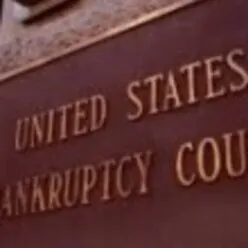| Arrearage | The total amount of unpaid debts, usually in reference to mortgage payments or other secured debts that have accumulated over time. |
| Automatic stay | An injunction that automatically halts most collection activities, lawsuits, and wage garnishments against a debtor upon filing for bankruptcy. |
| Bankruptcy | A legal process that allows individuals or businesses to eliminate or restructure their debts under the protection of federal bankruptcy laws. |
| Bankruptcy court | A specialized federal court that handles bankruptcy cases and proceedings. |
| Bankruptcy estate | All of the debtor’s property and assets that are subject to the bankruptcy process. |
| Bankruptcy trustee | A court-appointed official responsible for administering the bankruptcy case, reviewing the debtor’s financial information, and managing assets in the bankruptcy estate. |
| Chapter 7 | A type of bankruptcy filing that provides for the liquidation of a debtor’s non-exempt assets to repay creditors and discharge remaining unsecured debts. |
| Chapter 11 | A type of bankruptcy filing that allows businesses to reorganize and restructure their debts while continuing to operate. |
| Chapter 12 | A type of bankruptcy filing specifically designed for family farmers and fishermen, which enables them to reorganize their debts and continue operations. |
| Chapter 13 | A type of bankruptcy filing that allows individuals with regular income to restructure their debts into a manageable repayment plan, typically lasting 3-5 years. |
| Confirmation | The approval of a Chapter 13 bankruptcy repayment plan by the bankruptcy court. |
| Cramdown | A court-ordered reduction of a secured debt to the actual value of the collateral, which can result in lower monthly payments. |
| Creditor | A person or entity to whom the debtor owes money or has a legal obligation. |
| Debtor | A person or entity that has filed for bankruptcy protection and is seeking relief from their debts. |
| Debtor Education Course | A required financial management course that debtors must complete before receiving a bankruptcy discharge. |
| Discharge | A court order that releases the debtor from the legal obligation to pay certain debts, effectively eliminating them. |
| Dischargeable Debts | Dischargeable debts are debts that you are no longer liable for personally. The debt ends and creditors may not make any future collection attempts. The types of debt that are dischargeable differ between Chapter 7 and Chapter 13. Bankruptcy cannot discharge some debts: criminal debts, child support, alimony, most taxes, and student loans. |
| Disposable Income | Income remaining after deductions for living expenses and required debt payments, used to determine the monthly payment in a Chapter 13 plan. |
| Equity | The value of an asset after subtracting any outstanding loans or liens against it. |
| Exemptions | Specific assets or property that a debtor is allowed to keep during bankruptcy, as determined by federal or state law. |
| Means test | A financial analysis used in Chapter 7 bankruptcy cases to determine whether a debtor qualifies for a discharge of their debts based on their income, expenses, and the size of their family. |
| Motion for relief from stay | A request made by a creditor to the bankruptcy court for permission to proceed with collection efforts or legal actions against a debtor, despite the automatic stay. |
| Non-exempt assets | Property or assets that are not protected by exemptions and may be subject to liquidation in a bankruptcy case. |
| Plan Length | The duration of a Chapter 13 repayment plan, typically between three and five years. |
| Priority Debts | Debts that must be paid in full through a Chapter 13 repayment plan, such as child support, alimony, and certain tax debts. |
| Proof of claim | A document filed by a creditor in a bankruptcy case, stating the amount and nature of the debt owed by the debtor. |
| Reaffirmation agreement | A voluntary agreement between a debtor and a secured creditor in which the debtor agrees to continue making payments on a debt, despite bankruptcy, in order to retain the collateral. |
| Reaffirmation of Debt | If you want to keep something such as your car or home during a Chapter 7 bankruptcy proceeding, you will need to sign that you will repay that debt, that it will not be discharged. |
| Repayment Plan | A proposed plan detailing how the debtor will repay their debts over a specified period in a Chapter 13 bankruptcy case. |
| Secured debt | A debt that is backed by collateral, such as a mortgage or car loan. If the debtor defaults on the debt, the creditor has the right to take possession of the collateral. |
| Trustee | See “Bankruptcy trustee.” |
| Unsecured debt | A debt that is not backed by collateral, such as credit card debt or medical bills. Unsecured debts are generally discharged in bankruptcy if not repaid through liquidation or a repayment plan. |
| Wage Earners Bankruptcy | (Chapter 13 Bankruptcy) Chapter 13 bankruptcy proceedings are called a “wage earners bankruptcy.” This is because most debts aren’t discharged; they are reorganized in a three to five year repayment plan. You must have sufficient income (i.e. wages) to qualify for a Chapter 13 bankruptcy. |
